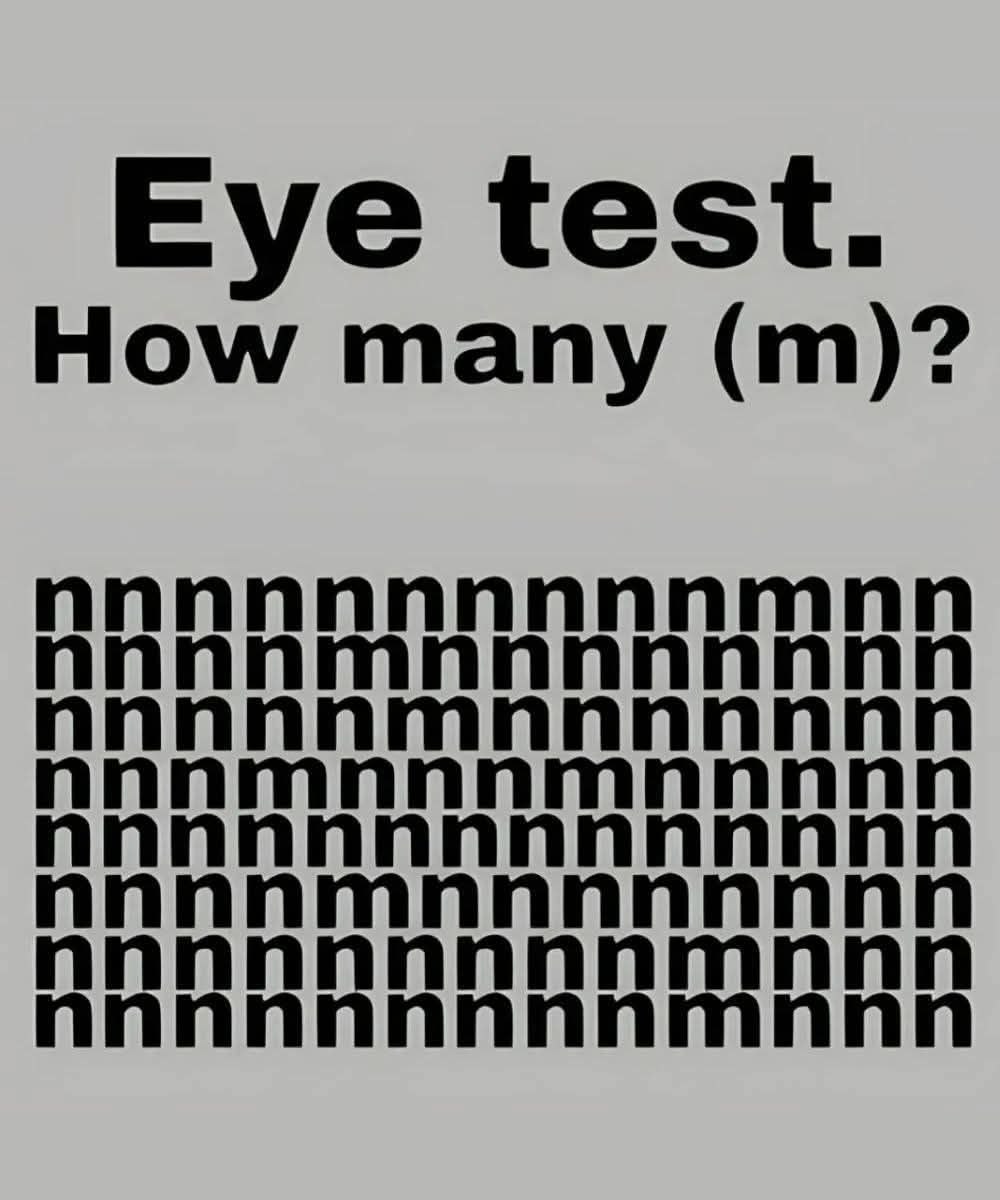Visual Perception and Focus: What This Letter Test Reveals About Your Brain
In the fast-paced digital world, our ability to focus and distinguish fine details is constantly put to the test. From scrolling through text-heavy feeds to catching typos in emails, visual perception plays a critical role in how we interpret the world. A simple image — like the one asking, “How many (m)?” — may seem like a fun distraction, but it’s rooted in real cognitive science.
This classic visual puzzle, filled with rows of nearly identical lowercase n’s and a few cleverly placed m’s, challenges your attention to detail, pattern recognition, and visual endurance. But there’s more behind it than meets the eye.
🔍 The Psychology of Letter Recognition
The letters “m” and “n” are visually very similar, differentiated by just one extra stroke. This minimal difference forces the brain to slow down and analyze each shape carefully — engaging the visual cortex in ways that fast reading doesn’t typically require.
This type of challenge highlights two key cognitive skills:
-
Selective Attention: Focusing on a specific detail while ignoring distractions.
-
Visual Discrimination: Recognizing differences between similar shapes or patterns.
Such skills are critical in daily life — from reading road signs at a glance to proofreading documents or even identifying hazards in complex environments.
🧠 Why Your Brain Gets Tricked
What makes this test so engaging — and deceptively difficult — is our brain’s tendency to group similar shapes and predict patterns. This is known as the Gestalt principle of similarity and proximity. Our brain wants to see repetition, so it assumes everything is the same unless something stands out dramatically.
The result? Many people miss a few “m”s on the first attempt.
👁️ The Benefits of Visual Puzzles Like This
-
Improves Focus: These exercises train your brain to concentrate deeply, even in a visually noisy environment.
-
Enhances Visual Acuity: Regular exposure to visual challenges sharpens your ability to distinguish fine details — useful for reading, design, or technical work.
-
Reduces Mental Fatigue: Engaging with short, stimulating puzzles breaks the monotony and refreshes the mind.
-
Fun for All Ages: This is an accessible form of brain training for children, adults, and seniors alike.

